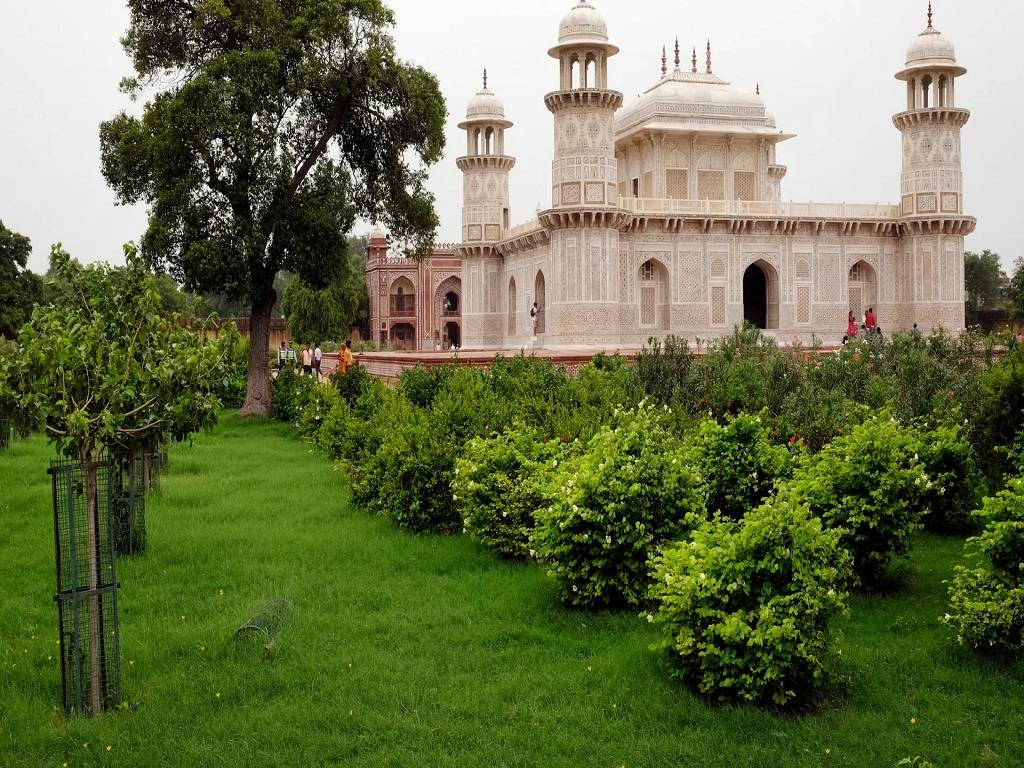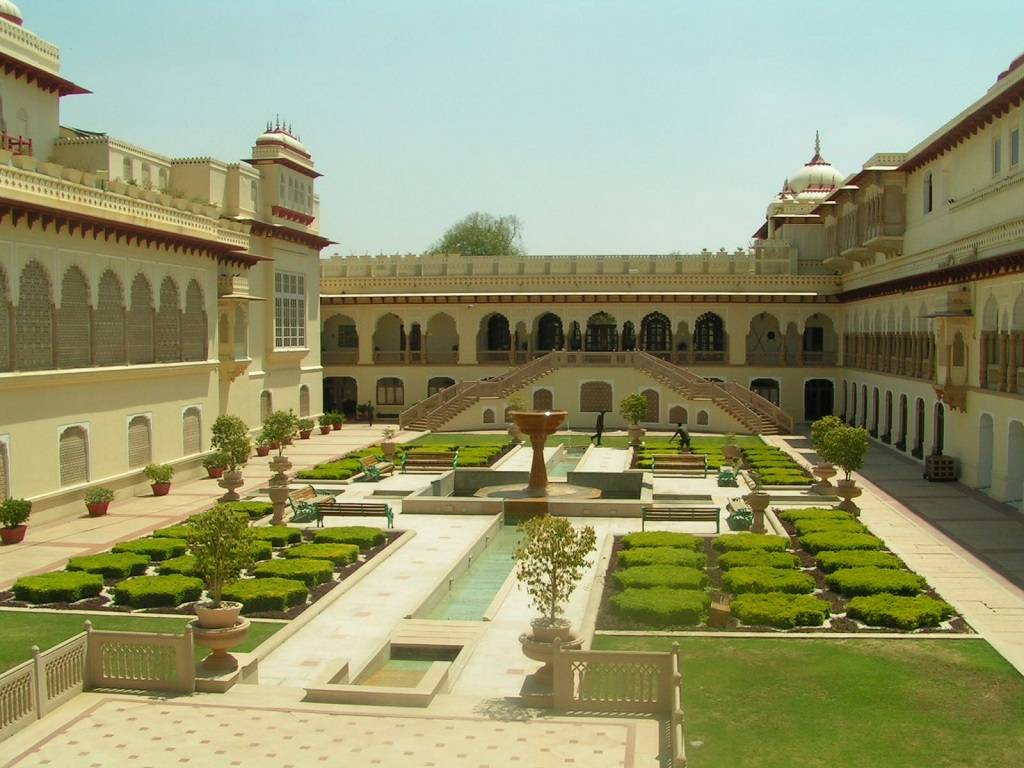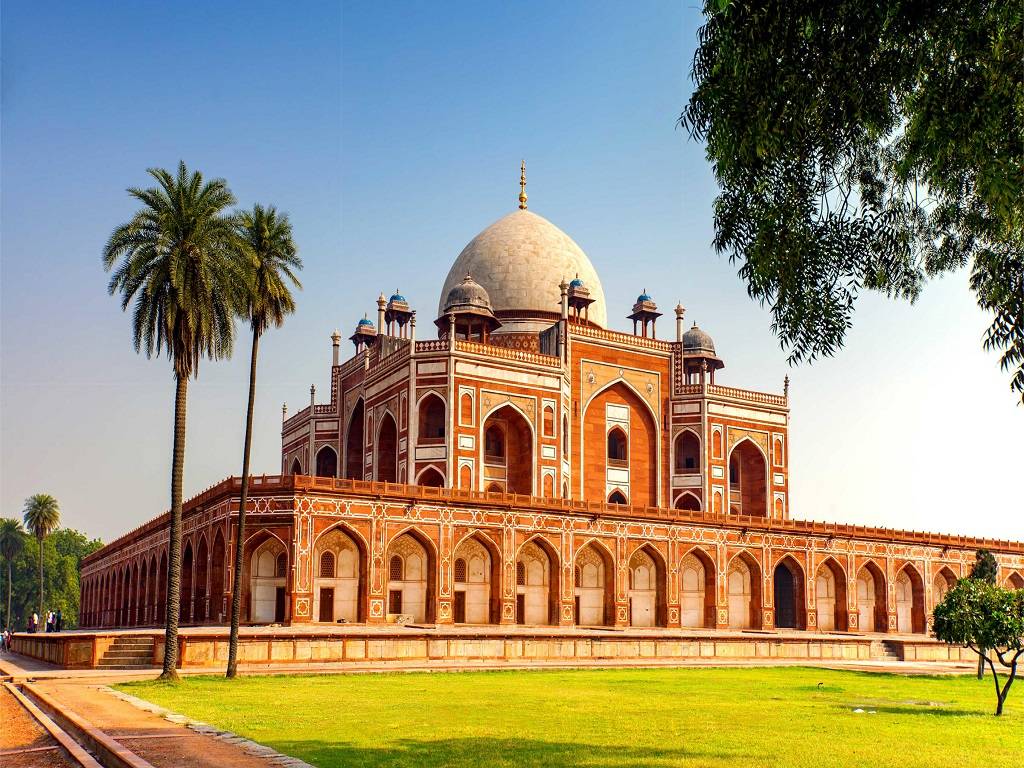
The Mughals' magnificent palaces, tombs, and mosques require no introduction. These structures displayed grandeur, splendor, lavishness, and a commanding visual presence. The gardens made by the Mughals built deserve a particular position among their magnificent structures, as they reshaped the landscapes of towns such as Delhi, Agra, Kashmir, and Lahore.
Mughal garden designs are highly influenced by historic Islamic gardens and are frequently seen as a place for relaxation and meditation. These gardens are said to represent a reminiscence of paradise.
This gardening design was influenced by Persian, namely the Charbagh structure, which is meant to create a vision of an earthly utopia in which humans coexist in perfect harmony with all aspects of nature.
The Taj Mahal Garden, Agra Fort, Humayun's Tomb Garden, and the Red Fort Garden are the most popular Mughal Gardens in India.
Within the walled enclosures, rectilinear layouts are extensively used. Inside the gardens, common elements include ponds, fountains, and canals. Afghanistan, Bangladesh, India, and Pakistan all feature Mughal gardens that differ from their Central Asian counterparts in terms of "very regulated geometry."
Mughal gardens were broadly classified into two types:
-
King’s and Queen’s Pleasure Gardens
-
The Tomb Garden
The earlier gardens were created only for the enjoyment of the monarch and queen and their family members, whilst the latter gardens were linked to the graves of the king or queen in order to provide serenity to the spirit.
History of Mughal Gardening
Babur, the Mughal empire's founder, defined his favourite style of garden as a Charbagh. The garden is referred to as bagh, baug, bageecha or bagicha. These gardens are said to represent a reminiscence of paradise. The Mughal Emperor Babur brought the notion of a planned garden, also known as the Charbagh, to South Asia.
As a result, he proceeded to build gardens and other waterworks to remind him of his ancestral country, which was continued by his successors, transforming the landscape of their kingdom. Because the Indian plains differed from his country, where the natural flow of water was employed, he introduced the Persian wheel water delivery system to build the gardens.
Running water and a pool to mirror the beauty of the sky and the garden, several species of trees- to offer shade, to provide colourful and fragrant fruits or flowers; grass; birds to fill the gardens with singing, and the entire cooled by a lovely breeze- are the major components of Mughal gardens. The Turkish-Mongolian components of the gardens are often tents, rugs, and canopies that depict the nomadic heritage.
Mughal Gardens were used for a variety of purposes, such as airy quadrangles inside royal structures, pleasure getaways, and as a platform for hunting trips. The gardens were also utilized as official rest stops, whilst the park was solely allocated for women (Zenan khana) and furnished with extra amenities like hammams.
Key features of Mughal Garden
Terraces: Terraces are components that preserve the percentage of land for an extended perspective regardless of the area's terrain. 7, 8, or 12 terraces represent 7 planets, 8 paradises and 12 zodiac signs, respectively. The entrance is on the bottom terrace. Because the Mughal rulers were from a mountainous land, the notion of creating a garden in terraces came easily to them.
Nahar’s (running water): Water is the life and soul of a Mughal Garden. The Mughals' love of moving water led them to locate their gardens near hill slopes and rivulets.
Site layout and design: The locations chosen for this purpose included a perennial river, the slope of a hill, and river banks. Mughal gardens are often square or rectangular in design. It is more than just a garden; it also acts as a fort, a dwelling, and a pleasant area.
High walls: Mughal gardens are surrounded by a high, robust wall. The wall's summit is decorated with serrated battlements. The existence of a high wall was for protection against the adversary and the scorching summer winds.
Entrance: The entrances are often towering and beautiful. The doors are massive wooden structures studded with hefty iron nails and spikes. To defend the kings and gardens from enemy attack, heavy gates are built.
Concept of Baradari: Baradari is a canopied structure with twelve open doors, three in each direction. One may sit on a baradari and enjoy the fresh wind while watching dark clouds and birds in the sky. The brick pillars of baradari were painted with floral vase patterns, and the floor was covered with thick rugs and couches.
Scented flowers: The flowers in Mughal gardens are mainly fragrant and colourful. The vibrant effects are achieved by massing different coloured annuals. Mixed colours have been favoured over monochromatic, complimentary or contrast colours.
Some Examples of Mughal Gardens in India
Agra's Ram Bagh
Ram Bagh, located five kilometers from the Taj Mahal, is one of India's oldest Mughal gardens. It adheres to the Charbagh concept and is also known as Bagh-gul-afshan (light scattering garden), Aalsi bagh, and Bagh-gul-afshan (light scattering garden). It's a Charbagh variant in which the water cascades down three terraces in a series of cascades.

Delhi's Humayun's Tomb
The garden is split into 36 squares by a grid of water channels and walks, with the center water channels appearing to go beneath the tomb construction and reappearing in a straight line on the other side, evoking the Quranic image of a river running beneath a garden of paradise.

Agra's Taj Mahal
The complex is built around grounds of 300 square meters, with elevated paths dividing each of the four halves of the gardens into 16 sunken flowerbeds. A high marble water tank in the garden's center lies midway between the tomb and the entrance, with a reflecting pool on the North-South axis that mirrors the Taj Mahal. The garden is also designed with tree avenues and fountains.

Kashmir's Shalimar Gardens
It consists of three terrace gardens of varying elevations connected by a waterway to the northeast of Dal Lake. This garden is designed on flat terrain with four spreading arms emanating from a central point as the water supply. The center canal, known as the Shah Nahar, serves as the garden's main axis. It winds its way across three tiers. The radial arms were removed, and the design became rectangular rather than Char Bagh's square plan.
















